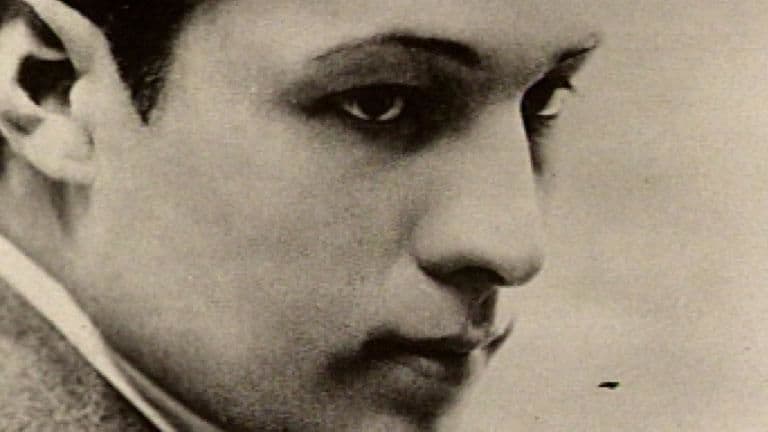The death of silent-screen idol Rudolph Valentino at the age of 31 sends his fans into a hysterical state of mass mourning. In his brief film career, the Italian-born actor established a reputation as the archetypal screen lover. After his death from a ruptured ulcer was announced, dozens of suicide attempts were reported, and the actress Pola Negri—Valentino’s most recent lover—was said to be inconsolable. Tens of thousands of people paid tribute at his open coffin in New York City, and 100,000 mourners lined the streets outside the church where funeral services were held. Valentino’s body then traveled by train to Hollywood, where he was laid to rest after another funeral.
Rudolph Valentino was born Rodolfo Guglielmi in Castellaneta, Italy, in 1895. He immigrated to the United States in 1913 and worked as a gardener, dishwasher, waiter, and gigolo before building a minor career as a vaudeville dancer. In 1917, he went to Hollywood and appeared as a dancer in the movie Alimony. Valentino became known to casting directors as a reliable Latin villain type, and he appeared in a series of small parts before winning a leading role in The Four Horsemen of the Apocalypse (1921). The film, which featured a memorable scene of Valentino dancing the tango, made the rakishly handsome Italian an overnight sensation. His popularity soared with romantic dramas such as The Sheik (1921), Blood and Sand (1922) and The Eagle (1925).
Valentino was Hollywood’s first male sex symbol, and millions of female fans idolized him as the “Great Lover.” His personal life was often stormy, and after two failed marriages he began dating the sexy Polish actress Pola Negri in 1926. Shortly after his final film, The Son of the Sheik, opened, in August 1926, he was hospitalized in New York because of a ruptured ulcer. Fans stood in a teary-eyed vigil outside Polyclinic Hospital for a week, but shortly after 12 p.m. on August 23 he succumbed to infection.
Valentino lay in state for several days at Frank E. Campbell’s funeral home at Broadway and 66th St., and thousands of mourners rioted, smashed windows, and fought with police to get a glimpse of the deceased star. Standing guard by the coffin were four Fascists, allegedly sent by Italian leader Benito Mussolini but in fact hired by Frank Campbell’s press agent. On August 30, a funeral was held at St. Malachy’s Church on W. 49th St., and a number of Hollywood notables turned out, among them Mary Pickford, Douglas Fairbanks, and Gloria Swanson. Pola Negri appointed herself chief mourner and obligingly fainted for photographers several times between the train station and the chapel. She collapsed in a dead faint again beside Valentino’s bier, where she had installed a massive flower arrangement that spelled out the word POLA.
Valentino’s body was shipped to Hollywood, where another funeral was held for him at the Church of the Good Shepherd on September 14. He then was finally laid to rest in a crypt donated by his friend June Mathis in Hollywood Memorial Park. Each year on the anniversary of his death, a mysterious “Lady in Black” appeared at his tomb and left a single red rose. She was later joined by other, as many as a dozen, “Ladies in Black.” The identity of the original Lady in Black is disputed, but the most convincing claimant is Ditra Flame, who said that Valentino visited her in the hospital when she was deathly ill at age 14, bringing her a red rose. Flame said she kept up her annual pilgrimage for three decades and then abandoned the practice when multiple imitators started showing up.

